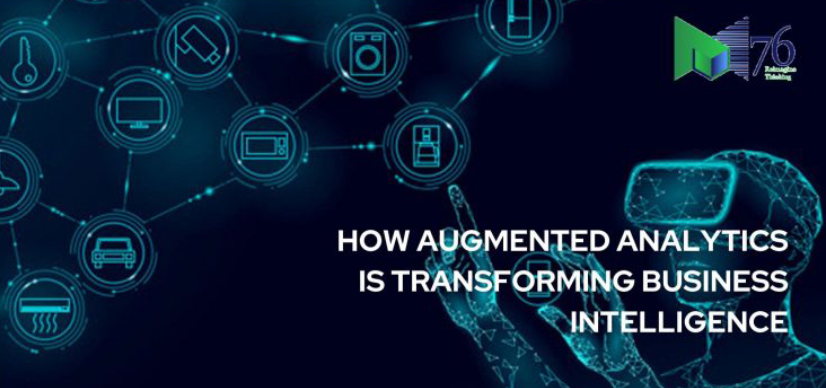What is Augmented Analytics?
Augmented analytics is the next stage in the evolution of analytics. Augmented analytics is the utilization of the most emerging technologies such as artificial intelligence and machine learning to automatically find and visualize relevant findings without having to write algorithms or build models.
These technologies are also used to help with data construction, insight creation and explanation. Engine specific to Augmented analytics can automatically understand its organisation’s data and information in order to allow the organisation’s people and stakeholders to make better data driven decisions.
Augmented analytics can also be used by data scientists and specialists to analyse the data without any bias about the dependence between the data variables. To make and manage an advanced analytics model, we can use augmented analytics to reduce the need for exclusive skills.
How Augmented Analytics is Transforming Business Intelligence:
The traditional business intelligence is transformed to self-service business intelligence by the likes of automation provided by augmented analytics. Self-service business intelligence can be operated by the end users, and traditional business intelligence was used to be centralised equipment operated mainly by IT people and teams.
One of the biggest downfalls of traditional business intelligence is it requires a long time to gain insights and the quality of data is not good. It also requires you to employ highly skilled data scientists and analysts. Whereas a self-service business intelligence equipped with augmented analytics offer convenient user interfaces that can be utilised by the customers with minimum assistance.
There are some benefits of using self-service business intelligence with augmented analytics like:
- Extensive data analysis- With augmented analytics, the device takes the pressure away from you, by analysing and deep diving complicated data combinations and effortlessly searches all the elements that influence your business.
- Actionable insights- You get access to critical and important insights which assist you to make better data driven decisions.
- Actionable insights- You get access to critical and important insights which assist you to make better data driven decisions.
- Quicker results- Quicker results are obtained because there are no data scientists scanning the data by hand.
- Better use of resources- When you automate a large part of the analysis process, your data analysts can focus on more complex, in-depth investigations that machines cannot yet handle.
Augmented analytics changes and automates three phases of business intelligence which are currently executed manually by data scientists and analysts. Since human involvement is present, this process is prone to human error.
- Data preparation and construction
- Operationalizing Insights from Data
- Discovering Patterns in Data
The Essential Elements That an Augmented Analytics Tool Must Have:
Augmented analytics uses machine learning and artificial intelligence to automate multiple processes in the data value chain, such as information discovery, data preparation and information sharing with business customers. Several elements of the augmented analytics engine consolidate to facilitate augmented data science, augmented data discovery, and augmented data preparation.
- Natural language processing
- Natural language generation
- Insight generation
- Prediction
- Recommendation
Wrapping up:
Mego enables powerful augmented analytics or modelling to make analysis recommendations and game play the outcomes of different scenarios. If you’re planning to implement Augmented Analytics in your organization or want to learn more about the topic, feel free to get in touch with one of our data analytics experts.

